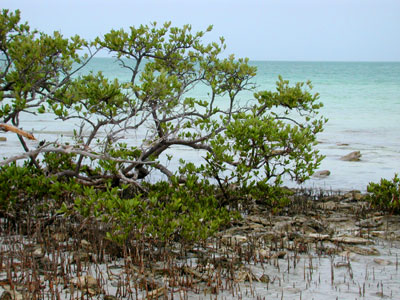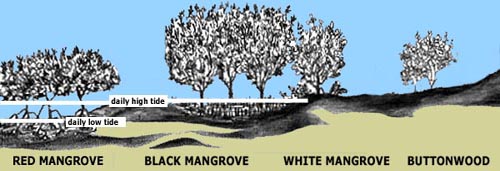
Zonation is affected by:
- Tidal Flooding
- Land Elevation
- Soil and Water Salinity
Red, black, and white mangrove trees, along with the buttonwood, may all grow along the same shoreline. When these species are found together, each is limited to different areas within the tidal zone. This zonation is determined by tidal changes, elevation of the land, and salinity of the soil and water.
Red mangroves are found along the water’s edge, with full exposure to tidal variation and winds. They are well adapted to these conditions with prop roots extending from the trunk and branches. These tangles of root systems increase stability as well as capturing sediments from the surrounding water.

Moving further inland, is the black mangrove, with pneumatophores extending upwards from the soils surrounding the trunk. These root adaptations are used to supply oxygen to the underground roots that are often in anaerobic (oxygen-free) sediments. White mangroves, often lacking special root adaptations, occur in the interior of the mangrove forest, followed by the buttonwood in the upland transitional area.
Glossary terms on page:
- zonation: distribution patterns of organisms in different biogeographic zones.
- salinity: concentration of total salts dissolved in water, usually measured in parts per thousand.
- pneumatophores: roots on wetland plants that function in respiration.